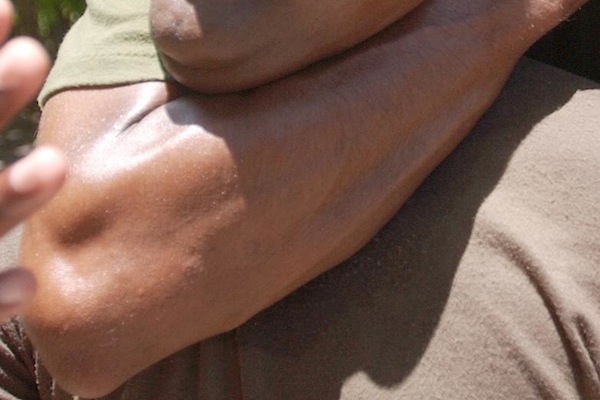
Photo by: USMC
Troops in training demonstrate a lateral vascular neck restraint, or LVNR.
Outrage over the death last week of Eric Garner while in police custody hasn’t been echoed on listservs and bulletin boards frequented by police officers and their supporters. “Looking at this video, there is no criminal action on the part of the officer(s) in my opinion,” wrote one poster at Thee Rant, where some posters disparaged the dead man and there was general concern that the cop at the center of the case might be unfairly blamed for Garner’s demise.
There’s no way to tell whether the posters at sites like Thee Rant are cops, retired cops, wannabes, buffs or trolls. But one post raised a question that may resonate as the uproar over Garner’s death lives on.
“If the cop was attempting to use a carotid restraint,” wrote Squeal Man, “he was doing it wrong.”
Literature on police tactics draws a distinction between a chokehold, which is when a person bars their arm across someone’s throat to block their windpipe, and a “carotid restraint,” which puts the pressure on the carotid artery and jugular vein moving blood to and from the brain along the sides of the neck.
A carotid restraint is supposed to make someone pass out without obstructing their breathing; it’s akin to the “sleeper” hold some professional wrestlers use. Police applications of the hold have been around since at least the early 1980s.
Most police departments prohibit “chokeholds” involving pressure to the windpipe. But carotid restraints (including a variation called the “Lateral Vascular Neck Restraint“, which is taught by the National Law Enforcement Training Center), are experiencing a comeback—even though they, like chokeholds, ran into controversy in years past.
“The carotid restraint control hold gives officers a viable method for controlling subjects when other force options may not be justified, effective, or available,” read an article this past January in Police magazine. “The hold is quick and highly effective and is absent of any evidence of traumatic injury.” (Unconfirmed reports suggest that Garner’s body showed no damage to the trachea.)
Carotid restraints, defenders argue, give cops a nonlethal option that’s less complicated than using a TASER but still effective even if the cop is smaller and weaker than the suspect. However, even proponents of the move warn it “is not to be applied to people with cardiac disorders.”
The resurgent interest in the tactic, according to Police, has been fueled by an increase in the number of police contacts with emotionally disturbed people or folks who are in “agitated chaotic” condition because they ingested bath salts and other new drugs.
The LAPD, which current NYPD commissioner William Bratton headed from 2002 to 2009, permits carotid restraints, though their use is rare. The department’s use-of-force reports (LA—remarkably publishes a report online about each use of force) indicate it was used once in 2008, once in 2010, and once in 2012.
As has been reported elsewhere, the NYPD patrol guide prohibits chokeholds, which “shall include, but is not limited to, any pressure on the throat or windpipe, which may prevent or hinder breathing or reduce intake of air.” It’s unclear if that prohibition extends to any restraint involving the neck; DCPI did not reply to an email seeking comment sent late on Monday.








